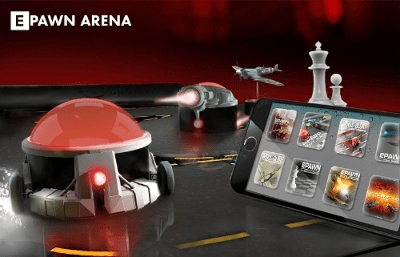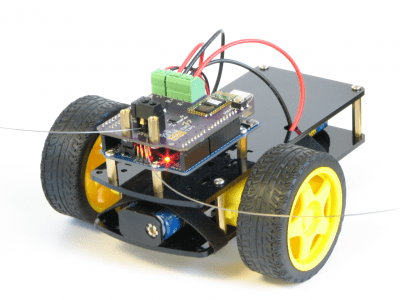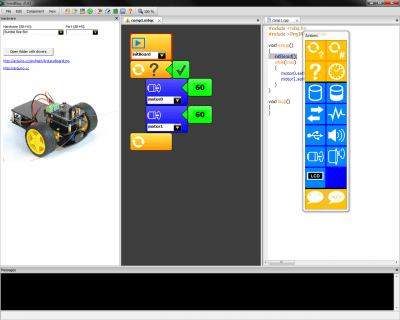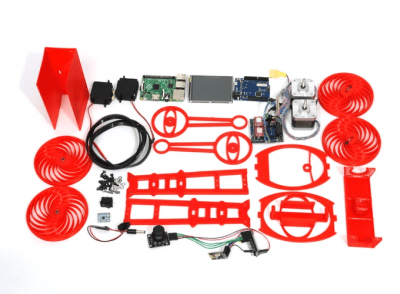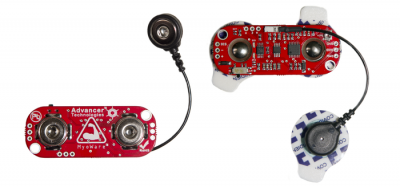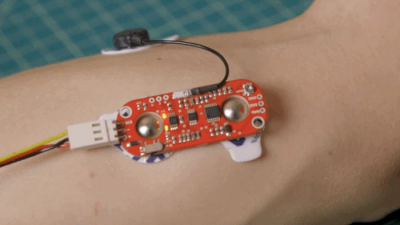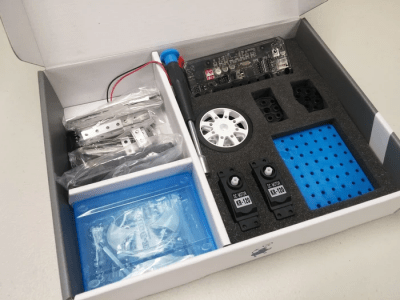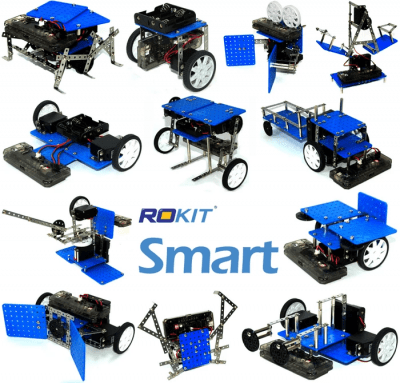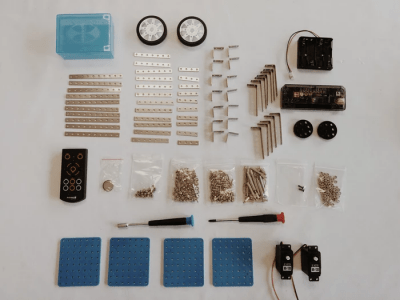New York—July 9, 2015—Robotics and open source hardware provider DFRobot today announces their new interactive toy, the Vortex robot. Designed to teach, empower and entertain children in an interactive robotics environment, DFRobot today also launched its Kickstarter campaign to raise $50,000 for continued product development.
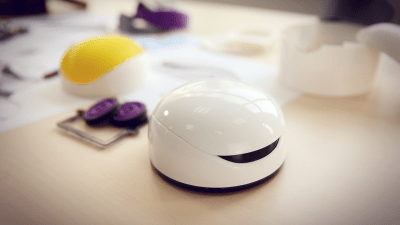
Combatting the trend of over-reliance on virtual games and screen time while transforming the robotic toy, DFRobot’s Vortex allows children to combine physical and virtual play. Children can interact with their toy robot while also programming and inventing their own commands and games, all via their smartphone or tablet.
Vortex has the following standout features:
- Ready for Action—The Vortex robot and apps are fully functional right out of the box. Simply pair the robot with each child’s personal phone or tablet (compatible with both iOS and Android) via Bluetooth, and it’s ready to run. Children maneuver the Vortex by simply tapping their device’s screen to initiate commands
- Infinite Programming Possibilities—Vortex presents infinite possibilities to create and play new games. It’s compatible with highly customizable open source hardware platform, Arduino, as well as with programming language Scratch. The Vortex robot can navigate obstacles, detect lines and report back by using infrared, grey scale and sound speakers. Easy to use, Vortex makes a child’s introduction to programming fully accessible and understandable and will be a great teaching resource for classrooms, making complex programming and coding easier for children to understand and practice
- Customizable Games—Children have endless opportunities to create their own games and can also play the pre-programmed, free games including: Bumping Fight, Virtual Golf, Driving and Robot Soccer. Each game allows children to compete against their friends, parents or the robot AI. All games are designed to be both intuitive and customizable, as the child creates their own play experience
“We’re transforming the household into part robotics lab, part playground,” said Ricky Ye, CEO, DFRobot. “We fully believe in the philosophy of learning through play. With our robot, which offers an immersive programming experience, children can learn to code while having genuine fun. Our mission is to bridge the gap between toys and education–particularly STEM education–as technology-driven skills are more important than ever.”
Vortex’s pre-programmed games are designed to be fun and intuitive. Bumping Fight serves as a pushing match between two players to force others from the arena, while Virtual Golf allows children to direct the robot towards a target, while controlling the power of their shots. In addition, Driving allows children to use their device as a remote control to drive their Vortex forward, backwards, right or left around a track, and with Robot Soccer, children can play a match with anywhere from 2-22 players.
DFRobot’s Vortex is suggested for children ages six and up. By supporting the Kickstarter campaign, backers can pre-order the Vortex robot two-pack for $119 with their contributions. Robots will ship to consumers in fall, 2015.
About DFRobot
DFRobot is a robotics and open source hardware provider that is dedicated to creating innovative, user-friendly products that foster a strong community of learning. DFRobot collaborates with multiple tech giants including Intel and Microsoft and has a product catalog boasting over 1,000 components and widgets including sensors, robotic platforms, communication modules and 3D printers. DFRobot is one of the early evangelists of the Maker Movement and strongly supports greater access to the maker culture.
DFRobot’s new product, Vortex is an intelligent and responsive robot that will enable children to learn, play and program. Vortex will bring together robotics with digital games through fun and interactive apps that allow children to explore, program their own games and solve problems.
DFRobot is headquartered in Shanghai, China. For more information visit www.dfrobot.com.




